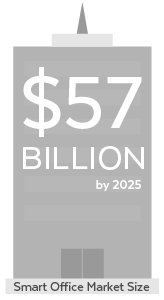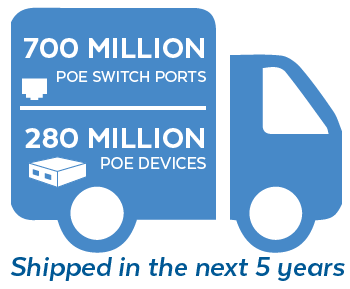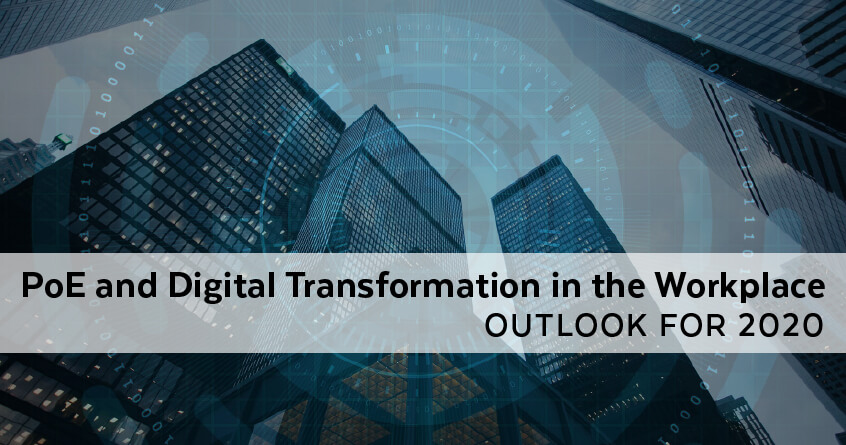In TechTarget’s IT Priorities Survey (2019), about 70% of respondents (IT experts) said they are adopting digital transformation. Nearly 50% of them said they were already undertaking formal projects toward digitization.
Also, the respondents answered questions about their intended budgetary allocations to achieve technological transformation. According to the survey, digitization budgets, objectives, and strategies differ from organization to organization.
Why are Companies Pursuing Digital Transformation?
The survey highlighted the key drivers of digital transformation as follows:
- Streamlining operations and processes (47%)
- Enhancing worker performance and productivity (47%)
- Improving customer experience and brand loyalty (43%)
- Product or service innovation (40%)
- Satisfying compliance and security requirements (36%)
- Time to market improvement (28%)
- Better customer analytics (23%)
- Closing skills gap/new talent acquisition (19%)
The IT professionals acknowledged the significance of a digital workplace in the attainment of strategic company goals.
From a digital perspective, workplaces are increasingly getting smarter, and Power Over Ethernet (PoE) is an important driver of this transformation. A 2018 Grand View Research report estimates that the smart office market size will hit about US$57 billion by 2025. The study closely ties the digital revolution in workplaces to technologies like the Internet of Things (IoT).
Going forward, the IoT will play an increasingly bigger role in the development of the connected office, according to the Grand View Research report. Through network connectivity and sensors, the technology will continue enabling the interconnection of physical devices that are vital to digital transformation in the office.
The report anticipates increased adoption of the following smart office hardware components toward 2025:
- HVAC control systems
- Smart lighting
- Security systems
- Energy management systems
- Audio-video conferencing systems
The Role of PoE in Digital Transformation in 2020
According to Leviton, the PoE revolution that started a few years ago continues through 2019. With the recently released IEEE 802.3bt standard, the technology delivers power and data over four pairs instead of only two. The development is a major boost to the PoE transformation that’s already underway in business offices today.
This change means PoE will be able to support more devices that require higher power. For this reason — along with the rise of the Internet of Things — more than 700 million PoE-enabled Ethernet switch ports and 280 million PoE devices are expected to ship in the next five years, according to market research firm Dell’Oro.
In a Leviton poll of networking professionals, respondents were asked which PoE use cases they thought would grow the most in the next three years. Fifty percent of the experts attributed the bulk of potential PoE growth to smart lighting in commercial buildings. About 29% pointed to building controls, while 19% said Wireless Access Points (WAPs) constituted the largest share of growing PoE applications in the short-term.
According to the white paper “The Role of Power over Ethernet in Copper Network Growth” by Leviton, enterprise wireless data is growing at an unprecedented rate. WAP will keep escalating in the coming years, and Bring Your Own Device (BYOD) policies in the office are partly responsible for this trend.
The use of video conferencing and voice over wireless networks is also expected to grow beyond 2020.
The white paper projected a 79% annual increase in sensor installation in PoE-powered smart workplaces between 2015 and 2020. The technology will power a broad spectrum of intelligent building applications, such as building management systems and security/access controls.
In 2020, the number of LED luminaries may reach 260 million. PoE will deliver power to a large proportion of these devices.
Key Drivers of PoE Adoption in the Workplace
The Leviton white paper explains five major reasons for the increasing adoption of PoE in workspaces:
1. Cost Savings
Organizations will be turning to PoE to power their digital technologies and reduce installation and maintenance costs. The approach is cheaper than setting up traditional data infrastructure (cabling) and AC power sources.
According to recent studies, the combination of efficient PoE design and smart building systems can reduce energy wastage in the office by half.
2. Enhanced Network Control
Networked PoE devices are easier to manage from a centralized point. The centralization of control helps to minimize human error and risks substantially. Non-networked hardware drawing power from line voltage and supported by onsite personnel is error-prone.
Downtime in non-PoE networks can cost a business organization between $1 million and $60 million per year, depending on its size. In contrast, networked PoE devices that are part of a smart office can collect and share critical status and performance data in real time to help preempt downtime.
3. Operational Efficiency
 When PoE devices are part of an integrated smart building management system, they can collect and share data to help with operational management. For example, insights into occupancy levels captured via PoE proximity sensors can inform better spatial management.
When PoE devices are part of an integrated smart building management system, they can collect and share data to help with operational management. For example, insights into occupancy levels captured via PoE proximity sensors can inform better spatial management.
Also, data on ambient light in an office can help to personalize lighting. It can enhance employee productivity by up to 16%.
Organizations can also conserve energy by tracking room occupancy, temperature changes, and peak ambient light levels. Incorporating PoE sensors into a centralized smart building management system helps to gather and analyze the relevant data. Then, automatic environmental controls make the necessary adjustments to meet verifiable energy requirements in the workplace.
4. Technology Expansion
In the TechTarget survey, 22% of the respondents expect their networking budgets to rise to achieve digital transformation. PoE will play a significant role in the expansion of enterprise networks and the integration of next-generation devices and applications. For instance, companies adopting PoE-enabled infrastructure are better placed to expand their digital technology to future use cases like the IoT and Li-Fi.
5. Future-Proofing Networks
A PoE enterprise network is future-proof in that it’s cheaper to upgrade and scale up over time. Such infrastructure is compatible with next-generation applications based on emerging industry standards.
In a nutshell, PoE-driven digital transformation in the workplace in 2020 will include these key components:
- Smart LED lighting
- Intelligent building systems
- Wireless Access Points (WAPs)
At Versa Technology, we supply a full range of IT networking equipment, suiting your current and long-term requirements. Our backward-compatible and forward-looking solutions are ideal for future-proofing your enterprise data infrastructure in line with your digital transformation plan.

